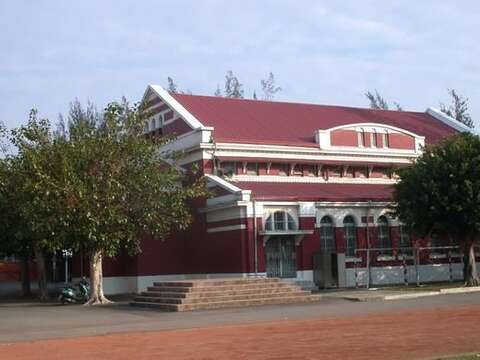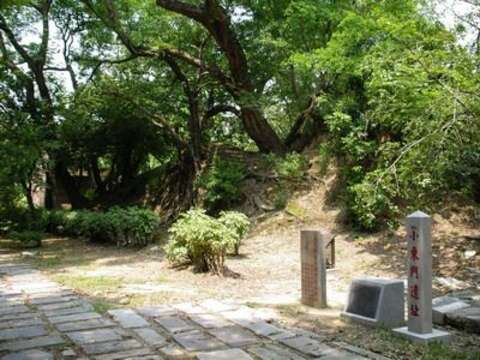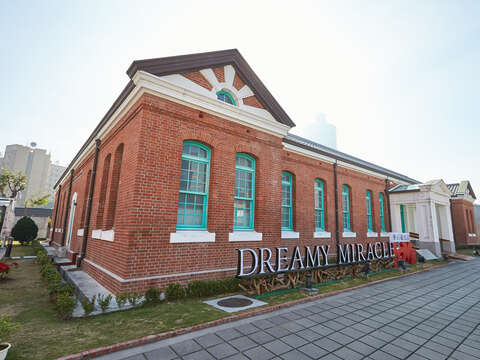Formerly Japanese Imperial Army Tainan Hospital(原日軍台南衛戍病院)
Updated:2024-06-05
4170
Introduce
In 1897 the Japanese Imperial Army founded the Tainan Military Hospoital at Chihkan Tower. In 1917, a larger-scale, fully equipped hospital building was built north of the Second Japanese Imperial Infantry Wing (now the Guangfu Campus of National Cheng Kung University) according to the Japanse Imperial Army Permanent Barrack Construction Project Phase III. In 1937, the facility was renamed Tainan Army’s Hospital. After Taiwan restoration, the nationalist government took over the hospital in 1948 and founded the Army Training Command Hospital, which began service later in mid-August. The hospital was renamed Taiwan Provincial Army Command Hospital in the following year and restructured into the “Army Headquarters Hospital” in 1950. Further in October, it was reorganized into the “Army Academy Hospital”. In March 1952, it was restructured into the “Army Independent Hospital” and renamed in May the “Amy Hospital” directly under Army Headquarters. In 1954, the “Army Hospital” was upgraded to the “Combined Logistics Command 4th General Hospital” directly under Combined Logistics Headquarters. In 1955, it was transferred to the Medical Affairs Division of the Army Logistics Command and renamed “Army 4th General Hospital”. In 1960, Army Headquarters renamed the hospital “Army 804 General Hospital”, or commonly known as the “804 Hospital” to standardize the number of all Army hospitals. In 2000, the present hospital site was appropriated to the National Cheng Kung University. In 2001, the university completed the planning of the west of its Lixing Campus (original military hospital).
The entire Japanese Imperial Army Tainan Hospital is connected by a number of south-north running buildings. Each building is a brick structure with different types of arcades. Small craftily designed air wells are on the roof to adapt to the climate of southern Taiwan and to characterize the building. In additional to the well-defined interior functions, the original Japanese Imperial Army Tainan Hospital included the enclosure wall, air-raid shelter, and landscaping facilities such as the garden, pond, and wooden pavilion. In the 1972 refurbishment project, a stone-stacked rockery, the national emblem of the ROC, and the stone carving “毋忘在莒” (Never Forget to Restore Mainland China) appeared at the pond northwest of the hospital. These are the best evidence to prove the military hospital role of the facility after Taiwan restoration.
Except for the lecture hall building, all other buildings are equipped with vents and stilts, with pebble-wash finish. The wall is made with the Dutch-styled Taiwan Renga bricks. Possible tiles include the cement tile and the black paste-clay tile, with a small number of asbestos boards or metal boards. Water resistance layer is made with wooden tiles, mainly with the Taiwan cypress. Some roofs are equipped with the roof window and air well. In addition to the reinforce concrete slab, the indoor floor has diamond-shaped pebble-wash finish. All windows are hung windows. To facilitate ventilation, windows are large in size and many in quantity. The hallway is spacious to facilitate patient bed movement. The wood slat lime work of the wall is the distinct difference between the original lecture hall and other buildings. There is neither roof window nor air well on the roof, and wood floor tiles are paved indoor. Overall, the entire building is almost a complete wood structure.
The Japanese Imperial Army Tainan Hospital was a military army was founded by the Japanese army during Japanese colonization first at the Chihkan Tower. Following the completion of related military facilities in the northeastern part of the city, a larger-scale, fully equipped hospital building was built north of the Second Japanese Imperial Infantry Wing (now the Guangfu Campus of National Cheng Kung University). After the restoration of Taiwan, the hospital was handed over to the Armed Forces, which founded the 804 Army hospital to serve citizens and military. It was an important hospital to residents in Zhonglou and Sanfen. In terms of the building’s value, it was the only fully-equipped military hospital in Taiwan. After the relocation of the 804 hospital, National Cheng Kung University have acquired the hospital site and turned it into the Lixing Campus for use by related departments after refurbishment.
In terms of either mass or spatial layout, the Japanese Imperial Army Tainan Hospital and other military hospitals in Taiwan, or the Japanese Gigu Prefecture Military Hospital are “independent” from one another, and the Imperial Army Tainan Hospital was one of the kinds. This historical monument covers 7 buildings, including the administration office, 2 patient wards, the auxiliary office, the lecture hall, the infectious disease ward, the laboratory, and the sanitization room. These buildings present the operation of military hospitals during Japanese colonization and reflect the access layout and design logic of hospitals in that time. In addition to buildings, there are many old trees in the hospitals worthy of preservation.
The spatial layout of the Japanese Imperial Army Tainan Hospital has a “branch” design, i.e. each building is designed for a specific purpose, and buildings are connected by means of the arcade. It is the major hospital layout in Taiwan during Japanese colonization. Structurally, all 7 buildings are composed of the red-brick carrying wall and the wooden gable truss to present the architectural features of the Japanse Imperial Army Permanent Barrack Construction Project Phase III.
The entire Japanese Imperial Army Tainan Hospital is connected by a number of south-north running buildings. Each building is a brick structure with different types of arcades. Small craftily designed air wells are on the roof to adapt to the climate of southern Taiwan and to characterize the building. In additional to the well-defined interior functions, the original Japanese Imperial Army Tainan Hospital included the enclosure wall, air-raid shelter, and landscaping facilities such as the garden, pond, and wooden pavilion. In the 1972 refurbishment project, a stone-stacked rockery, the national emblem of the ROC, and the stone carving “毋忘在莒” (Never Forget to Restore Mainland China) appeared at the pond northwest of the hospital. These are the best evidence to prove the military hospital role of the facility after Taiwan restoration.
Except for the lecture hall building, all other buildings are equipped with vents and stilts, with pebble-wash finish. The wall is made with the Dutch-styled Taiwan Renga bricks. Possible tiles include the cement tile and the black paste-clay tile, with a small number of asbestos boards or metal boards. Water resistance layer is made with wooden tiles, mainly with the Taiwan cypress. Some roofs are equipped with the roof window and air well. In addition to the reinforce concrete slab, the indoor floor has diamond-shaped pebble-wash finish. All windows are hung windows. To facilitate ventilation, windows are large in size and many in quantity. The hallway is spacious to facilitate patient bed movement. The wood slat lime work of the wall is the distinct difference between the original lecture hall and other buildings. There is neither roof window nor air well on the roof, and wood floor tiles are paved indoor. Overall, the entire building is almost a complete wood structure.
The Japanese Imperial Army Tainan Hospital was a military army was founded by the Japanese army during Japanese colonization first at the Chihkan Tower. Following the completion of related military facilities in the northeastern part of the city, a larger-scale, fully equipped hospital building was built north of the Second Japanese Imperial Infantry Wing (now the Guangfu Campus of National Cheng Kung University). After the restoration of Taiwan, the hospital was handed over to the Armed Forces, which founded the 804 Army hospital to serve citizens and military. It was an important hospital to residents in Zhonglou and Sanfen. In terms of the building’s value, it was the only fully-equipped military hospital in Taiwan. After the relocation of the 804 hospital, National Cheng Kung University have acquired the hospital site and turned it into the Lixing Campus for use by related departments after refurbishment.
In terms of either mass or spatial layout, the Japanese Imperial Army Tainan Hospital and other military hospitals in Taiwan, or the Japanese Gigu Prefecture Military Hospital are “independent” from one another, and the Imperial Army Tainan Hospital was one of the kinds. This historical monument covers 7 buildings, including the administration office, 2 patient wards, the auxiliary office, the lecture hall, the infectious disease ward, the laboratory, and the sanitization room. These buildings present the operation of military hospitals during Japanese colonization and reflect the access layout and design logic of hospitals in that time. In addition to buildings, there are many old trees in the hospitals worthy of preservation.
The spatial layout of the Japanese Imperial Army Tainan Hospital has a “branch” design, i.e. each building is designed for a specific purpose, and buildings are connected by means of the arcade. It is the major hospital layout in Taiwan during Japanese colonization. Structurally, all 7 buildings are composed of the red-brick carrying wall and the wooden gable truss to present the architectural features of the Japanse Imperial Army Permanent Barrack Construction Project Phase III.
Information
TEL +886-6-2757575
Address No. 25, Xiaodong Rd., North Dist., Tainan City Taiwán, R.O.C
Category Culture
Open Hours Please contact NCKU
Charge Free




